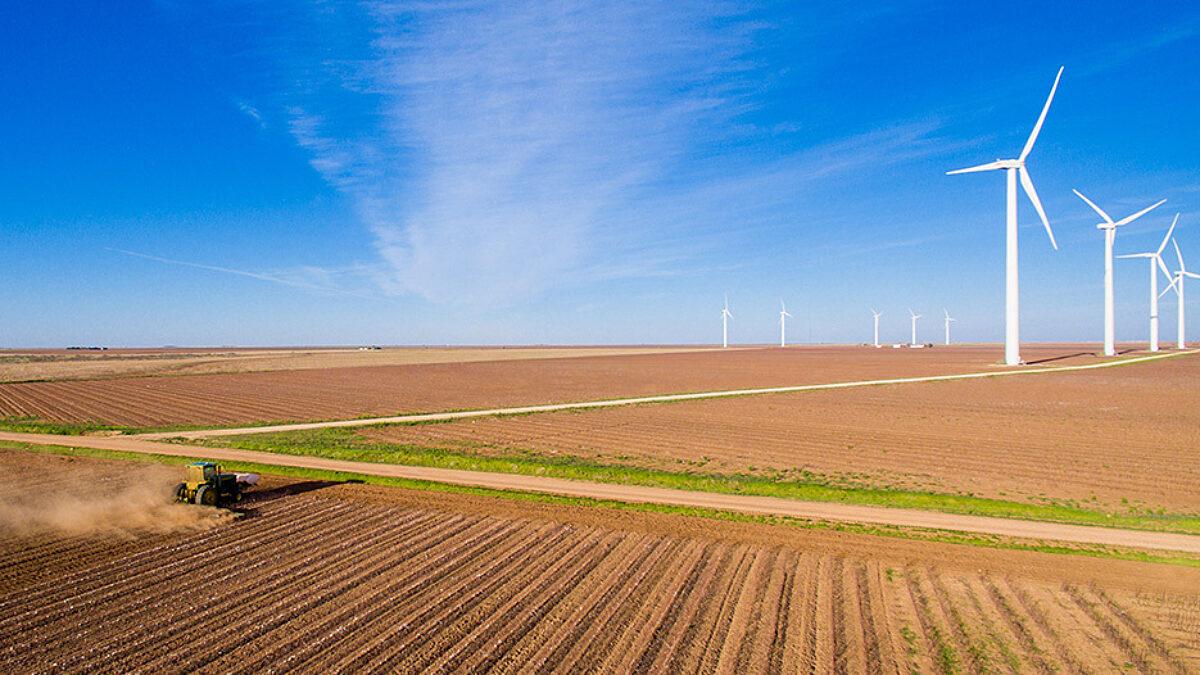Wind Generation Benefits Farmers, Rural Communities and the Environment
TOPICS
Wind EnergyGuest Author
Special Contributor to FB.org

photo credit: iStockPhoto
Guest Author
Special Contributor to FB.org
U.S. energy production is undergoing rapid transformation, with substantial impacts to the agriculture and rural economies. Many farmers already produce renewable energy by growing corn to make ethanol and soybeans for biodiesel. Now, more farmers and ranchers are harvesting the wind blowing over their land to make electricity.
Large wind turbines increasingly dot the countryside, and, like ethanol and biodiesel production, wind energy is yet another example of how agriculture is becoming a significant provider of renewable energy.
Many of the roughly 500 manufacturing facilities and wind turbine technicians are located in rural areas.
From the late 1800s through the 1930s, farmers used wind to pump water, grind grain and, to a small extent, generate power for self-sufficiency. Although most are no longer functional, old metal windmills still stand as quaint symbols of farm life before the Rural Electrification Act of 1936 paved the way to extend electrical service to rural America.
In recent years, about $143 billion has been invested in U.S. wind energy, and the investment is growing. U.S. wind energy production has grown by seven times in the last decade, with more than 53,000 turbines in 41 states generating more than 84,000 megawatts of electricity -- enough to power nearly 25 million homes nationally. Wind energy currently contributes about 6 percent of the nation’s power grid, but is expected to grow to as much as 20 percent in the near future, according to the Energy Department’s “Wind Vision” report. In some states, the percentage is much higher. In Texas – a state normally linked to petroleum production – wind accounts for 12 percent of the state’s electrical generation. Iowa leads the nation with 31 percent.
Employment related to wind turbine technology is among the fastest-growing career fields in the U.S., supporting more than 73,000 jobs. Many of the roughly 500 manufacturing facilities and wind turbine technicians are located in rural areas.
Rural communities benefit not only from the added jobs, but also from payments farmers and ranchers receive to host turbines on their property.
Each turbine uses less than half an acre, so farmers can plant crops and graze livestock right to the turbine's base. Most can continue to use about 95 percent of the land around wind turbines. Some farmers have also purchased wind turbines, and others are starting to form wind power cooperatives. The payments farmers receive from wind power developers or utility companies can help offset long periods of low commodity prices and increase spending power in rural communities. Additionally, most wind power developers pay property taxes to counties, separately and above the taxes paid by local farmers.
Many communities also benefit from capital investments by companies choosing to locate facilities in areas served by wind generation. In Iowa, wind electricity helped attract billions of dollars in capital investment from Facebook, Microsoft and Google data centers, creating hundreds of jobs.
Wind energy also has no emissions and preserves water compared with other power generation methods, saving some 87 billion gallons in 2016 alone.
Some critics contend that farmers should be in the business of growing food and fiber, and not producing fuel or energy. But energy and food needs are ever-increasing, and U.S. agriculture has the capacity for both. The potential for 80,000 new jobs and $1.2 billion in new income for farmers and rural landowners increases farm economic stability and benefits rural communities. Renewable energy and agriculture are a winning combination.
Robert Giblin
Freelance writer
Robert Giblin writes, speaks and consults about agricultural and food industry issues, policies and trends.